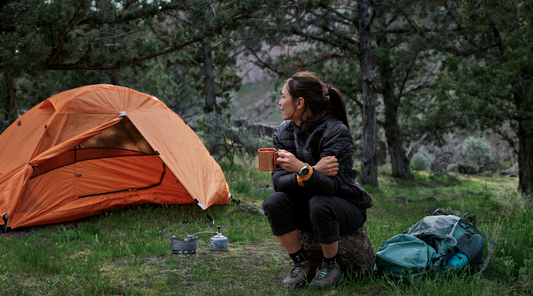Your cart is empty
Natural disasters such as hurricanes, wildfires, floods and earthquakes can cause disruption to the terrestrial networks we rely on everyday. Yet it is often not until the disaster strikes that communications are considered, at which point first responders need reliable, instantly deployable solutions. In this scenario it is critical information is communicated efficiently in order to coordinate the appropriate response
Here we outline the key product categories that should be considered for response and contingency planning strategies for those agencies involved in disaster response.
Requirement | High-speed data sending

The Kymeta u8 terminal functions on Ku-band satellite and also cellular networks to offer you the lowest cost option wherever possible. With Kymeta's flat panel terminal a mobile communications office can be setup in a matter of minutes with no specialist training required. The high speed data link can be crucial in reporting back to remote teams and procuring the required equipment and expertise to deal with the incident in the most effective way possible. Kymeta u8 is set to be a game changer within the satellite industry.

An alternative is Iridium’s Certus network which provides high speed data and voice service via satellite anywhere in the world. The Certus compatible MCD-MissionLink is immediately deployable and allows up to 12 simultaneous wireless connections.
Requirement | Local response coordination between two areas
Sometimes only a phone call can offer the peace of mind that an instruction has been understood and is being actioned. Satellite phones offer this advantage when cellular phones may not function as networks become impaired or overwhelmed in the event of a disaster. As communications may only be temporarily required it is important that flexible options are available for any associated airtime costs – Flex plans with 1 month minimum term are available for both Inmarsat and Iridium satellite phones.
Find out more about Flex Plans >
Did you know?
In 2017, due to Hurricanes Irma and Maria, more than 95% of cell sites were out in Puerto Rico and 77% of cell sites were out in the Virgin Islands. Six months later, 4.4% and 13.8% of cell sites were out in Puerto Rico & the Virgin Islands, respectively
Requirement | Local response coordination within a smaller area
Two-way radio certainly has the advantage of instantaneous communication which the recipient cannot ignore with no airtime plans to setup or ongoing subscription costs. With many modern radios offering features such as SMS, tracking, emergency alarm and lone worker functions, two-way radio can be a quick and easy option for emergency response teams.

An interesting development in two-way radio is the Motorola WAVE which integrates with other radios and existing smartphones and PCs already running within your organisation to create an integrated network.
Requirement | Worker safety
For individuals venturing into dangerous situations carrying a satellite tracker is essential to keep track of their location and status. Trackers from the Garmin inReach range are two-way allowing lone workers to report back and request equipment or backup. An SOS or help button can be life-saving when used for serious incidents. Alternatively a one-way tracker from SPOT is a cost-effective way for remote workers to be monitored or call for help as they respond to the situation.
Find out more about satellite trackers >
Local Community
Communications are not only important for coordinating response and recovery. The victims of disasters also find solace in being able to communicate to family and friends that they are unharmed. One NGO which helps in disaster regions is Télécoms Sans Frontières (TSF). TSF was founded in 1998 as the world’s first NGO focusing on emergency-response technologies. During humanitarian crises they give affected people the possibility to contact their loved ones and begin to regain control of their lives, as well as building rapid-response communications centres for local and international responders.
Find out more about the work TSF do >
“Hearing your loved ones' voice when you are at your most vulnerable represents considerable psychological relief. Beyond informing them of your condition, we consider that a simple telephone call establishes a sense of reassurance, allowing people to make informed decisions and assess the choices they make.”
Télécoms Sans Frontières
Summary
Telecoms are crucial in coordinating disaster response operations. The best case scenario is that equipment is on standby in case of an emergency, tested regularly and staff are trained on it’s use but we know that is not always the case. The next best thing is that telecoms are considered in an overall strategy so that the knowledge of what is available is there and ready to act upon in case the worst happens.
We are here to advise on disaster response communications, please contact us if you would like to discuss the options.




